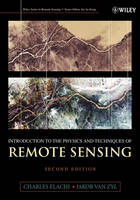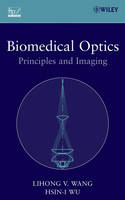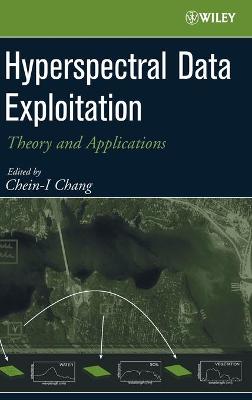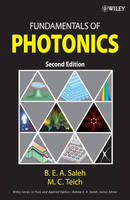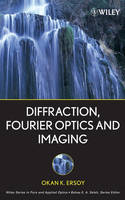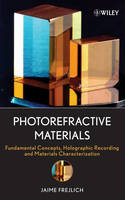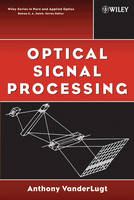Introduction to the Physics and Techniques of Remote Sensing
Introduction to the Physics and Techniques of Remote Sensing
van Zyl, Jakob J.; Elachi, Charles
John Wiley & Sons Inc
05/2006
584
Dura
Inglês
9780471475699
1176
Descrição não disponível.
Preface. 1. Introduction. 1-1 Types and Classes of Remote Sensing Data. 1-2 Brief History of Remote Sensing. 1-3 Remote Sensing Space Platforms. 1-4 Transmission Through the Earth and Planetary Atmospheres. References and Further Reading. 2. Nature and Properties of Electromagnetic Waves. 2-1 Fundamental Properties of Electromagnetic Waves. 2-2 Nomenclature and Definition of Radiation Quantities. 2-3 Generation of Electromagnetic Radiation. 2-4 Detection of Electromagnetic Radiation. 2-5 Interaction of Electromagnetic Waves with Matter: Quick Overview. 2-6 Interaction Mechanisms Throughout the Electromagnetic Spectrum. Exercises. References and Further Reading. 3. Solid Surfaces Sensing in the Visible and Near Infrared. 3-1 Source Spectral Characteristics. 3-2 Wave-Surface Interaction Mechanisms. 3-3 Signature of Solid Surface Materials. 3-4 Passive Imaging Sensors. 3-5 Types of Imaging Systems. 3-6 Description of Some Visible/Infrared Imaging Sensors. 3-7 Active Sensors. 3-8 Surface Sensing at Very Short Wavelengths. 3-9 Image Data Analysis. Exercises. References and Further Reading. 4. Solid-Surface Sensing: Thermal Infrared. 4-1 Thermal Radiation Laws. 4-2 Heat Conduction Theory. 4-3 Effect of Periodic Heating. 4-4 Use of Thermal Emission in Surface Remote Sensing. 4-5 Use of Thermal Infrared Spectral Signatures in Sensing. 4-6 Thermal Infrared Sensors. Exercises. References and Further Reading. 5. Solid-Surface Sensing: Microwave Emission. 5-1 Power-Temperature Correspondence. 5-2 Simple Microwave Radiometry Models. 5-3 Applications and Use in Surface Sensing. 5-4 Description of Microwave Radiometers. 5-5 Examples of Developed Radiometers. Exercises. References and Further Reading. 6. Solid-Surface Sensing: Microwave and Radio Frequencies. 6-1 Surface Interaction Mechanism. 6-2 Basic Principles of Radar Sensors. 6-3 Imaging Sensors: Real-Aperture Radars. 6-4 Imaging Sensors: Synthetic-Aperture Radars. 6-5 Nonimaging Radar Sensors: Scatterometers. 6-6 Nonimaging Radar Sensors: Altimeters. 6-7 Nonconventional Radar Sensors. 6-8 Subsurface Sounding. Exercises. References and Further Readings. 7 Ocean Surface Sensing. 7-1 Physical Properties of the Ocean Surface. 7-2 Mapping of the Ocean Topography. 7-3 Surface Wind Mapping. 7-4 Ocean Surface Imaging . Exercises. References and Further Reading. 8. Basic Principles of Atmospheric Sensing and Radiative Transfer. 8-1 Physical Properties of the Atmosphere. 8-2 Atmospheric Composition. 8-3 Particulates and Clouds. 8-4 Wave Interaction Mechanisms in Planetary Atmospheres. 8-5 Optical Thickness. 8-6 Radiative Transfer Equation. 8-7 Case of a Nonscattering Plane Parallel Atmosphere. 8-8 Basic Concepts of Atmospheric Remote Sounding. Exercises. References and Further Reading. 9. Atmospheric Remote Sensing in the Microwave Region. 9-1 Microwave Interactions with Atmospheric Gases. 9-2 Basic Concept of Downlooking Sensors. 9-3 Basic Concept for Uplooking Sensors. 9-4 Basic Concept for Limblooking Sensors. 9-5 Inversion Concepts. 9-6 Basic Elements of Passive Microwave Sensors. 9-7 Surface Pressure Sensing. 9-8 Atmospheric Sounding by Occultation. 9-9 Microwave Scattering by Atmospheric Particles. 9-10 Radar Sounding of Rain. 9-11 Radar Equation for Precipitation Measurement. 9-12 The Tropical Rainfall Measuring Mission (TRMM). Exercises. References and Further Reading. 10. Millimeter and Submillimeter Sensing of Atmospheres. 10-1 Interaction with Atmospheric Constituents. 10-2 Downlooking Sounding. 10-3 Limb Sounding. 10-4 Elements of a Millimeter Sounder. Exercises. References and Further Reading. 11. Atmospheric Remote Sensing in the Visible and Infrared. 11-1 Interaction of Visible and Infrared Radiation with the Atmosphere. 11-2 Downlooking Sounding. 11-3 Limb Sounding. 11-4 Sounding of Atmospheric Motion. 11-5 Atmospheric Sensing at Very Short Wavelengths. Exercises. References and Further Reading. 12. Ionospheric Sensing. 12-1 Properties of Planetary Ionospheres. 12-2 Wave Propagation in Ionized Media. 12-3 Ionospheric Profile Sensing by Topside Sounding. 12-4 Ionospheric Profile by Radio Occultation. Exercises. References and Further Reading. Appendix A. Use of Multiple Sensors For Surface Observations. Appendix B. Summary of Orbital Mechanics Relevant to Remote Sensing. B-1 Circular Orbits. B-1-1 General Characteristics. B-1-2 Geosynchronous Orbits. B-1-3 Sun-Synchronous Orbits. B-1-4 Coverage. B-2 Elliptical Orbits. B-3 Orbit Selection. Exercises. Appendix C. Simplified Weighting Functions. C-1 Case of Downlooking Sensors (Exponential Atmosphere). C-2 Case of Downlooking Sensors (Linear Atmosphere). C-3 Case of Upward Looking Sensors. Appendix D. Compression of a Linear FM Chirp Signal. Index.
Este título pertence ao(s) assunto(s) indicados(s). Para ver outros títulos clique no assunto desejado.
remote; edition; essential; engineering; book offers; sensingtheory; authoritative; science; publication; first; technological; tremendous; field; dynamic; book; skills; knowledge; gamut; wavematter interaction; physics; including
Preface. 1. Introduction. 1-1 Types and Classes of Remote Sensing Data. 1-2 Brief History of Remote Sensing. 1-3 Remote Sensing Space Platforms. 1-4 Transmission Through the Earth and Planetary Atmospheres. References and Further Reading. 2. Nature and Properties of Electromagnetic Waves. 2-1 Fundamental Properties of Electromagnetic Waves. 2-2 Nomenclature and Definition of Radiation Quantities. 2-3 Generation of Electromagnetic Radiation. 2-4 Detection of Electromagnetic Radiation. 2-5 Interaction of Electromagnetic Waves with Matter: Quick Overview. 2-6 Interaction Mechanisms Throughout the Electromagnetic Spectrum. Exercises. References and Further Reading. 3. Solid Surfaces Sensing in the Visible and Near Infrared. 3-1 Source Spectral Characteristics. 3-2 Wave-Surface Interaction Mechanisms. 3-3 Signature of Solid Surface Materials. 3-4 Passive Imaging Sensors. 3-5 Types of Imaging Systems. 3-6 Description of Some Visible/Infrared Imaging Sensors. 3-7 Active Sensors. 3-8 Surface Sensing at Very Short Wavelengths. 3-9 Image Data Analysis. Exercises. References and Further Reading. 4. Solid-Surface Sensing: Thermal Infrared. 4-1 Thermal Radiation Laws. 4-2 Heat Conduction Theory. 4-3 Effect of Periodic Heating. 4-4 Use of Thermal Emission in Surface Remote Sensing. 4-5 Use of Thermal Infrared Spectral Signatures in Sensing. 4-6 Thermal Infrared Sensors. Exercises. References and Further Reading. 5. Solid-Surface Sensing: Microwave Emission. 5-1 Power-Temperature Correspondence. 5-2 Simple Microwave Radiometry Models. 5-3 Applications and Use in Surface Sensing. 5-4 Description of Microwave Radiometers. 5-5 Examples of Developed Radiometers. Exercises. References and Further Reading. 6. Solid-Surface Sensing: Microwave and Radio Frequencies. 6-1 Surface Interaction Mechanism. 6-2 Basic Principles of Radar Sensors. 6-3 Imaging Sensors: Real-Aperture Radars. 6-4 Imaging Sensors: Synthetic-Aperture Radars. 6-5 Nonimaging Radar Sensors: Scatterometers. 6-6 Nonimaging Radar Sensors: Altimeters. 6-7 Nonconventional Radar Sensors. 6-8 Subsurface Sounding. Exercises. References and Further Readings. 7 Ocean Surface Sensing. 7-1 Physical Properties of the Ocean Surface. 7-2 Mapping of the Ocean Topography. 7-3 Surface Wind Mapping. 7-4 Ocean Surface Imaging . Exercises. References and Further Reading. 8. Basic Principles of Atmospheric Sensing and Radiative Transfer. 8-1 Physical Properties of the Atmosphere. 8-2 Atmospheric Composition. 8-3 Particulates and Clouds. 8-4 Wave Interaction Mechanisms in Planetary Atmospheres. 8-5 Optical Thickness. 8-6 Radiative Transfer Equation. 8-7 Case of a Nonscattering Plane Parallel Atmosphere. 8-8 Basic Concepts of Atmospheric Remote Sounding. Exercises. References and Further Reading. 9. Atmospheric Remote Sensing in the Microwave Region. 9-1 Microwave Interactions with Atmospheric Gases. 9-2 Basic Concept of Downlooking Sensors. 9-3 Basic Concept for Uplooking Sensors. 9-4 Basic Concept for Limblooking Sensors. 9-5 Inversion Concepts. 9-6 Basic Elements of Passive Microwave Sensors. 9-7 Surface Pressure Sensing. 9-8 Atmospheric Sounding by Occultation. 9-9 Microwave Scattering by Atmospheric Particles. 9-10 Radar Sounding of Rain. 9-11 Radar Equation for Precipitation Measurement. 9-12 The Tropical Rainfall Measuring Mission (TRMM). Exercises. References and Further Reading. 10. Millimeter and Submillimeter Sensing of Atmospheres. 10-1 Interaction with Atmospheric Constituents. 10-2 Downlooking Sounding. 10-3 Limb Sounding. 10-4 Elements of a Millimeter Sounder. Exercises. References and Further Reading. 11. Atmospheric Remote Sensing in the Visible and Infrared. 11-1 Interaction of Visible and Infrared Radiation with the Atmosphere. 11-2 Downlooking Sounding. 11-3 Limb Sounding. 11-4 Sounding of Atmospheric Motion. 11-5 Atmospheric Sensing at Very Short Wavelengths. Exercises. References and Further Reading. 12. Ionospheric Sensing. 12-1 Properties of Planetary Ionospheres. 12-2 Wave Propagation in Ionized Media. 12-3 Ionospheric Profile Sensing by Topside Sounding. 12-4 Ionospheric Profile by Radio Occultation. Exercises. References and Further Reading. Appendix A. Use of Multiple Sensors For Surface Observations. Appendix B. Summary of Orbital Mechanics Relevant to Remote Sensing. B-1 Circular Orbits. B-1-1 General Characteristics. B-1-2 Geosynchronous Orbits. B-1-3 Sun-Synchronous Orbits. B-1-4 Coverage. B-2 Elliptical Orbits. B-3 Orbit Selection. Exercises. Appendix C. Simplified Weighting Functions. C-1 Case of Downlooking Sensors (Exponential Atmosphere). C-2 Case of Downlooking Sensors (Linear Atmosphere). C-3 Case of Upward Looking Sensors. Appendix D. Compression of a Linear FM Chirp Signal. Index.
Este título pertence ao(s) assunto(s) indicados(s). Para ver outros títulos clique no assunto desejado.

